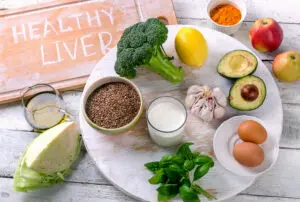Discover the Dr. Ohhira Difference!
By Ross Pelton, RPh, PhD, CCN
• Probiotic bacteria: Probiotics is the term that refers to the friendly or beneficial bacteria that reside in the human gastrointestinal tract. It is now understood that a healthy microbiome, which consists of an overwhelming majority of beneficial probiotic bacteria, is one of the most fundamental aspects of good health. Dr. Ohhira selected 12 strains of probiotic bacteria with a wide range of health-promoting benefits as the foundation of Dr. Ohhira’s Probiotics.
• Prebiotic Foods: For your probiotic bacteria to thrive and survive, they must be fed well. They type of nourishment or nutrition that probiotic bacteria prefer and require are classified as prebiotic foods. The most important category of prebiotic foods are the fiber-rich, multi-colored vegetables, followed by leafy greens and multi-colored fruits. A higher diversity of different strains of probiotic bacteria in the intestinal tract equates to better health. The most important and most effective way to create and maintain a diverse microbiome is to feed your probiotic bacteria with a highly diverse, fiber-rich diet. It is not just the quantity of dietary fiber that is important. To maintain a highly diverse microbiome, you must supply your probiotic bacteria with a highly diverse, fiber-rich diet. This means it is best to consume many different kinds of fiber-rich vegetables, fruits and leafy greens every day.
Dr. Ohhira’s famous multi-year fermentation production system utilizes dozens of different kinds of fiber-rich foods, including vegetables, fruits, mushrooms, and seaweeds. These are the prebiotic food supply, which supports the growth and proliferation of the probiotic bacteria in Dr. Ohhira’s Probiotics.
• Postbiotic Metabolites: The metabolic processes of bacteria result in the production of wide range of compounds referred to as postbiotic metabolites. Pathological bacteria are “bad” because they secrete postbiotic metabolites that are highly inflammatory and toxic to us. However, probiotic bacteria produce postbiotic metabolites that have a wide range of health-regulating effects.
Examples of postbiotic metabolites include B-vitamins, vitamin K, amino acids, neurotransmitters, short-chain fatty acids, organic acids, enzymes, natural antibiotics, antioxidants, anti-inflammatory compounds, glutathione, fulvic acids and phenyllactic acid.
Dr. Ohhira’s Probiotics are a fermented food probiotic. Dr. Ohhira’s unique multi-year fermentation production process enables the probiotic bacteria to digest the prebiotic foods they are supplied with, which results in the production of a wide range of postbiotic metabolites. Recent research conducted in Japan reported that Dr. Ohhira’s Probiotics contains over 430 different postbiotic metabolites. This is The Dr. Ohhira’s Difference. Dr. Ohhira’s Probiotics is a Complete Microbiome System that delivers probiotics, prebiotics, and postbiotic metabolites. This is why Dr. Ohhira’s Probiotics achieve Rapid Microbiome Restoration or Rapid Microbiome Repair.







